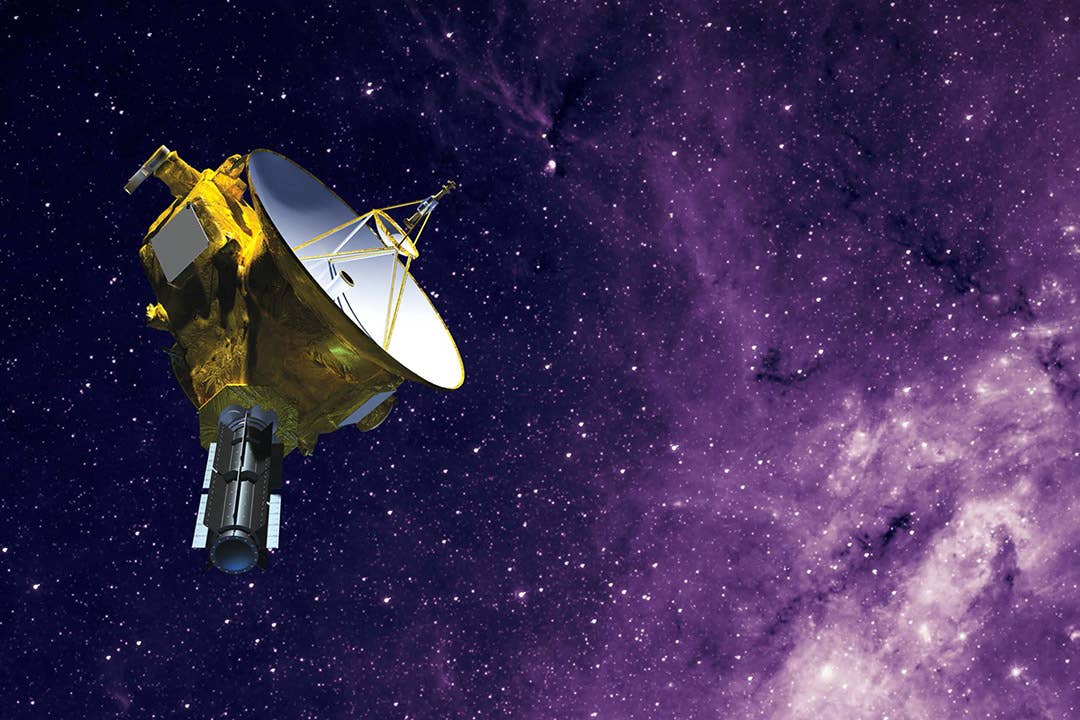Groundbreaking discovery answers the fundamental question of how all life on Earth began
According to their findings, the missing link in the evolution of chemistry into biology is not a fossil

[Sept. 14, 2023: Staff Writer, The Brighter Side of News]
A team of Japanese scientists found the missing link between chemistry and biology in the origins of life. (CREDIT: Creative Commons)
A Japanese research team has made a groundbreaking discovery in the origins of life. According to their findings, the missing link in the evolution of chemistry into biology is not a fossil, but a tiny self-replicating globule called a coacervate droplet.
The researchers believe that these droplets, which they developed, represent the crucial step in the formation of life on Earth. Their study, titled "Proliferation of Early-Life Protocells", was published in the scientific journal Nature Communications.
For decades, scientists have been trying to determine how the simple molecules that existed on early Earth gave rise to the complex living organisms we see today. The researchers behind the recent study, Muneyuki Matsuo and Kensuke Kurihara, both from Japan, have proposed a new theory.
They believe that life originated with the formation of macromolecules from simple small molecules. These macromolecules formed molecular assemblies that could proliferate, eventually leading to the emergence of life.
Related Stories
Chemical evolution was first proposed in the 1920s as a hypothesis to explain how life began. Since then, many studies have been conducted to verify the RNA world hypothesis. The RNA world hypothesis states that self-replicating genetic material existed prior to the evolution of DNA and proteins. However, the origin of molecular assemblies that proliferate from small molecules has remained a mystery for about a hundred years.
Matsuo, who is an assistant professor of chemistry in the Graduate School of Integrated Sciences for Life at Hiroshima University, explains that proliferation requires spontaneous polymer production and self-assembly under the same conditions. The researchers set out to design and synthesize a new prebiotic monomer from amino acid derivatives as a precursor to the self-assembly of primitive cells.
The researchers discovered that when this prebiotic monomer was added to room temperature water at atmospheric pressure, the amino acid derivatives condensed, arranging into peptides. These peptides then spontaneously formed droplets. The droplets grew in size and in number when fed with more amino acids. The researchers also found that the droplets could concentrate nucleic acids, which are genetic material, and that they were more likely to survive against external stimuli if they exhibited this function.
A team of Japanese scientists found the missing link between chemistry and biology in the origins of life. (CREDIT: Hiroshima University)
"A droplet-based protocell could have served as a link between 'chemistry' and 'biology' during the origins of life," Matsuo said. "This study may serve to explain the emergence of the first living organisms on primordial Earth."
The researchers plan to continue investigating the process of evolution from amino acid derivatives to primitive living cells, as well as improving their platform to verify and study the origins of life and continued evolution.
"By constructing peptide droplets that proliferate with feeding on novel amino acid derivatives, we have experimentally elucidated the long-standing mystery of how prebiotic ancestors were able to proliferate and survive by selectively concentrating prebiotic chemicals," Matsuo said. "Rather than an RNA world, we found that 'droplet world' may be a more accurate description, as our results suggest that droplets became evolvable molecular aggregates - one of which became our common ancestor."
In the first stage, the amino acid thioester is oligomerised to produce a peptide. Droplets are formed from the product by liquid−liquid phase separation (LLPS). Continuous addition of the amino acid thioesters as a source of nutrition and physical stimulus to the droplets allows the droplets to divide while they self-reproducing autocatalytically through the incorporation of nutrients. The robustness of the proliferating droplet reflects its ability to concentrate macromolecules such as nucleic acids. (CREDIT: Nature Communications)
The researchers' findings have the potential to revolutionize our understanding of the origins of life. If their hypothesis is correct, it would mean that life did not arise from a single molecule or from a particular set of environmental conditions.
Instead, it would suggest that life is the result of a complex series of events that occurred over a long period of time, involving the spontaneous formation of macromolecules, the assembly of molecular structures, and the proliferation of these structures into more complex forms.
The study has already generated a great deal of interest in the scientific community, with many experts praising the researchers' innovative approach. "This is a very exciting and important discovery," said Dr. Ramanarayanan Krishnamurthy, a professor of chemistry at the Scripps Research Institute in California. "It provides a plausible mechanism for how life could have emerged from a mixture of simple organic molecules."
Krishnamurthy is one of many experts in the field of origins of life research who have struggled to find a satisfactory explanation for how life emerged on Earth. The idea that life began with the formation of macromolecules from simple small molecules, followed by the evolution of molecular assemblies that could proliferate, has been around for decades. However, until now, there has been little experimental evidence to support this hypothesis.
The coacervate droplet discovery is the latest in a series of breakthroughs in origins of life research, which have been driven in part by advances in technology. In recent years, researchers have developed new techniques for studying the properties of organic molecules and for simulating the conditions that might have existed on early Earth.
One such technique is known as "molecular dynamics simulation," which uses powerful computers to simulate the behavior of molecules in a virtual environment. This approach has been used to study the formation of peptides and other organic molecules, and to explore the properties of primitive cells.
Another approach involves the use of "microfluidic devices," which are small, specialized devices that can be used to manipulate and study the properties of fluids at a very small scale. These devices have been used to simulate the conditions that might have existed on early Earth, and to study the behavior of coacervate droplets and other primitive cell-like structures.
Despite these advances, there is still much that remains unknown about the origins of life. One of the biggest challenges facing researchers is the fact that the conditions on early Earth were very different from those that exist today. The atmosphere was composed of different gases, and the environment was much more hostile to life.
Nonetheless, the coacervate droplet discovery is being hailed as a major step forward in the field of origins of life research, and it has already generated a great deal of interest from both scientists and the general public. Many experts are hopeful that this discovery will lead to new insights into the process by which life emerged on Earth, and could potentially shed light on the possibility of extraterrestrial life elsewhere in the universe.
The researchers themselves are already looking ahead to the next stage of their work. They plan to continue investigating the process of evolution from amino acid derivatives to primitive living cells, and to explore ways in which their platform can be improved to verify and study the origins of life and continued evolution.
"This study may serve to explain the emergence of the first living organisms on primordial Earth," said Muneyuki Matsuo, one of the lead authors of the study. "But there is still much more work to be done. We hope that our research will inspire others to continue exploring the mysteries of the origins of life."
For more science stories check out our New Discoveries section at The Brighter Side of News.
Note: Materials provided above by the The Brighter Side of News. Content may be edited for style and length.
Like these kind of feel good stories? Get the Brighter Side of News' newsletter.



